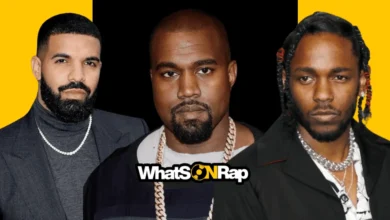In-Depth Article: Decoding the Hip Hop Scene

Exploring the Depths of the Hip Hop Culture
Hip hop culture has emerged as a powerful force, shaping not only music but also fashion, language, and societal norms. In this comprehensive exploration, we delve deep into the vibrant world of hip hop, decoding its origins, evolution, and cultural impact.
Unraveling the Origins of Hip Hop
Hip hop traces its roots back to the South Bronx in the 1970s, where African American and Latino youth pioneered a cultural movement in the face of socioeconomic challenges. The neighborhood’s block parties became incubators for DJs, MCs, graffiti artists, and breakdancers to showcase their talents and express themselves creatively.
- Related Content: Unleash Your Creativity with Royalty-Free Hip Hop Music
The Four Elements of Hip Hop
At the core of hip hop culture are four distinct elements: MCing (rapping), DJing, graffiti art, and breakdancing. Each element represents a unique form of artistic expression and serves as a pillar of the hip hop community. From the lyrical prowess of MCs to the rhythmic beats of DJs, hip hop embodies a rich tapestry of talent and innovation.
The Evolution of Hip Hop
Hip hop has undergone significant evolution since its inception, evolving from its humble beginnings in the Bronx to become a global phenomenon.
The 1980s saw the rise of golden era hip hop, characterized by socially conscious lyrics and innovative production techniques. Artists like Grandmaster Flash, Run-D.M.C., and Public Enemy used their music to address issues of race, poverty, and injustice.
Mainstream Success and Cultural Influence
As hip hop gained mainstream recognition in the 1990s, artists like Tupac Shakur, The Notorious B.I.G., and Jay-Z achieved commercial success while maintaining their authenticity and street credibility.
Hip hop’s influence extended beyond music to fashion, with artists like Run-D.M.C. popularizing brands like Adidas and Kangol. The genre also played a pivotal role in shaping youth culture, influencing slang, dance moves, and attitudes towards social issues.
Diversity and Innovation in Hip Hop
Hip hop’s influence has transcended geographical and cultural boundaries, giving rise to diverse subgenres and regional scenes. From the West Coast gangsta rap of N.W.A. to the conscious lyricism of East Coast artists like Nas and Wu-Tang Clan, hip hop has evolved to reflect the experiences and perspectives of artists from all walks of life.
The Digital Age of Hip Hop
The advent of the internet and digital technology has democratized the hip hop industry, allowing independent artists to bypass traditional gatekeepers and connect directly with their fanbase. Platforms like SoundCloud, YouTube, and Spotify have provided a platform for aspiring artists to share their music and build a loyal following.
Hip Hop’s Global Reach
Today, hip hop is a global phenomenon, with artists from around the world embracing the culture and incorporating it into their own musical traditions. From South Korea’s BTS to Nigeria’s Burna Boy, hip hop has become a universal language that transcends borders and unites diverse communities.
Challenges and Controversies
Despite its widespread popularity, hip hop continues to face criticism and controversy, particularly surrounding issues of misogyny, violence, and materialism. Artists like Eminem and Kanye West have courted controversy with their provocative lyrics and public personas, sparking debate about the role of hip hop in society.
The Future of Hip Hop
As we look to the future, hip hop remains a dynamic and ever-evolving art form, driven by innovation, creativity, and a commitment to authenticity. Whether through music, fashion, or activism, hip hop will continue to shape culture and inspire generations to come.
- Read More: The Power and Passion of Rap Music
This in-depth exploration of the hip hop scene has provided valuable insights into the origins, evolution, and cultural impact of this influential movement. From its humble beginnings in the Bronx to its global reach today, hip hop continues to push boundaries and challenge conventions, reaffirming its status as one of the most influential cultural forces of our time.
FAQ’s:
1. What is hip hop culture?
Hip hop culture is a multifaceted artistic and social movement that originated in African American and Latino communities in the Bronx, New York City, during the 1970s.
2. What are the key elements of hip hop?
The key elements of hip hop include MCing (rapping), DJing (turntablism), graffiti art, and b-boying (breakdancing).
3. Who are some influential figures in hip hop history?
Influential figures in hip hop history include Grandmaster Flash, Afrika Bambaataa, Kool Herc, DJ Kool Herc, and DJ Grand Wizard Theodore.
4. How has hip hop influenced mainstream culture?
Hip hop has had a profound influence on mainstream culture, shaping music, fashion, language, and attitudes around the world.
5. What are some subgenres of hip hop?
Subgenres of hip hop include gangsta rap, conscious rap, trap music, mumble rap, alternative hip hop, and more.
6. How has hip hop evolved over the years?
Hip hop has evolved from its origins as a grassroots movement in the Bronx to become a global cultural phenomenon, with new styles, sounds, and trends emerging regularly.
7. What role does storytelling play in hip hop music?
Storytelling is a central element of hip hop music, with artists using their lyrics to tell personal narratives, reflect on social issues, and share experiences from their communities.
8. How does hip hop contribute to social change?
Hip hop has been a powerful tool for social change, with artists using their platforms to raise awareness of issues such as racism, police brutality, inequality, and poverty.
9. What are some common themes in hip hop lyrics?
Common themes in hip hop lyrics include struggles with poverty and violence, the pursuit of success and wealth, social justice, self-expression, and cultural identity.
10. How has hip hop impacted other art forms?
Hip hop has influenced other art forms such as visual art, fashion, film, and literature, inspiring artists to incorporate hip hop aesthetics, themes, and attitudes into their work.
